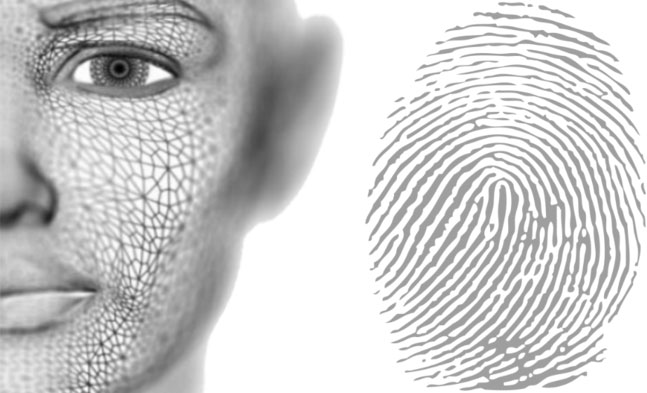A biometric modality is the type of human trail that a biometric system accepts as input. There are many biological and behavioral patterns in human beings that biometrics can leverage to identify them individually. Biometric modalities can be classified largely in three categories: Physiological, Behavioral and a combination of these two.
Following table compares fingerprint recognition and facial recognition side by side:
| Fingerprint recognition | Facial recognition |
| Intrusive, subject is require to touch the equipment in order to present a biometric sample. | Non-Intrusive, subject is not require to contact the equipment for presenting the biometric sample. |
| User consent is required. | User consent may not be required. |
| Extensively used in identification and authentication. | Extensively used in surveillance and public applications. |
| High distinctiveness and unique characteristics. Fingerprints do not repeat, not even in twins. | Low distinctiveness. Facial characteristics may repeat in people, e.g. in twins. |
| Highly accurate | Low accuracy |
| Subjects cannot be identified from a distance. | Subjects can be identified from a distance. |
| Small template size | Large template size |
| High permanence and stability, very less affected by age. | Medium permanence and stability, may get affected by age. |
| High security and high confidence level. | Low security and low confidence level. |
| Medium collectability. Low exposure due to location of minute details. | Highly collectable. Highly exposed due to location of face and larger details. |
| Requires specific set of hardware and software. | Can be completely software based, can make use of existing digital images. |
| Medium universality: Fingerprint may not be available in some individuals. | High universality: Facial features are found in all human beings. |
| Low potential for circumvention. Not easily spoofable. | High potential for circumvention. |
| Medium level of acceptability. | High level of acceptability. |






















